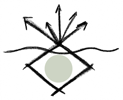Because folks often ask for ways to develop their scribing practice, and because the field of graphic facilitation seems RIPE for learning, i’m taking a turn to share some suggested processes in a do-it-yourself kind of way. These can be self-guided, in solo or group contexts, and mainly offer ways to explore an intersection of why, how, and what. The when & where, that’s up to you! Hope this is useful. Feedback very welcome. More to come as i refine chicken scratch workshop notes…
All Visual Practices below relate to A Practice Model for Scribing as a primary framework, and of course relate to each other.
Being: Identifying Presence
Click here for .pdf download – Group process, 30-40 minutes
| 5 | Personal Story: Guide | Share an experience accessing your “presence” to get through a challenging situation. Explain: What was difficult? What were you called to do? What did you access internally to find the necessary resource and navigation? How did you feel throughout the experience? What did activating your presence enable? |
| 5 | The “Zone” | Explore why presence matters in a systemic context. Refer to post: Presence and the Reciprocal Zone. |
| 10 | Personal Story: Learner | Suggest people get comfortable in their seats and close their eyes.“Notice your feet firmly planted on the ground, your torso straight, your head reaching the sky. Breathe in and out, and settle into your body and the moment.
Recall an experience where you felt most alive and connected with the world and put yourself back in that picture. What was the scene – what does it look like, smell like, what is the temperature, what colors are around you, what textures? How do you feel? Where is that experience located in your body, if at all? Considering this scene, imagine your sense of awareness increasing. What are you noticing as you take in all that is around you and become one with this time and place? When you are ready, slowly come back to the current moment and open your eyes.” Take a few minutes to write about this experience in your journal. Then turn to a neighbor and each share your story while your partner listens. |
| 5 | Practice | Now at a board or with a page of paper, take a minute to get centered again. Recall your scene, get rooted, connect to the room (and system at large) and breathe. Notice when you are in a zone and not, without judgment. This practice is less about what your drawing will look like and more about your quality of being as you hold the pen, approach the blank surface, and let content come through your hand while you draw.
In this video, we have someone connecting profoundly with the earth, which is how he feels most alive. Listen to his story without over-thinking it, take it all in, be completely present in a field of awareness for yourself and for him, attend to your state of being, identify what wants to be named, and with that knowledge, draw. Native Perspective on Sustainability – www.nativeperspectives.net |
| 5 | Reflect | As a whole group, gather and reflect on the experience (before spending time looking at any drawings.)
Possible questions to ask: What did you hear? What was this man describing? How might it relate to scribing? Were you able to find access your presence? Were you distracted, and by what? Where might you find windows of opportunity to deepen your presence in relation to your practice? |
